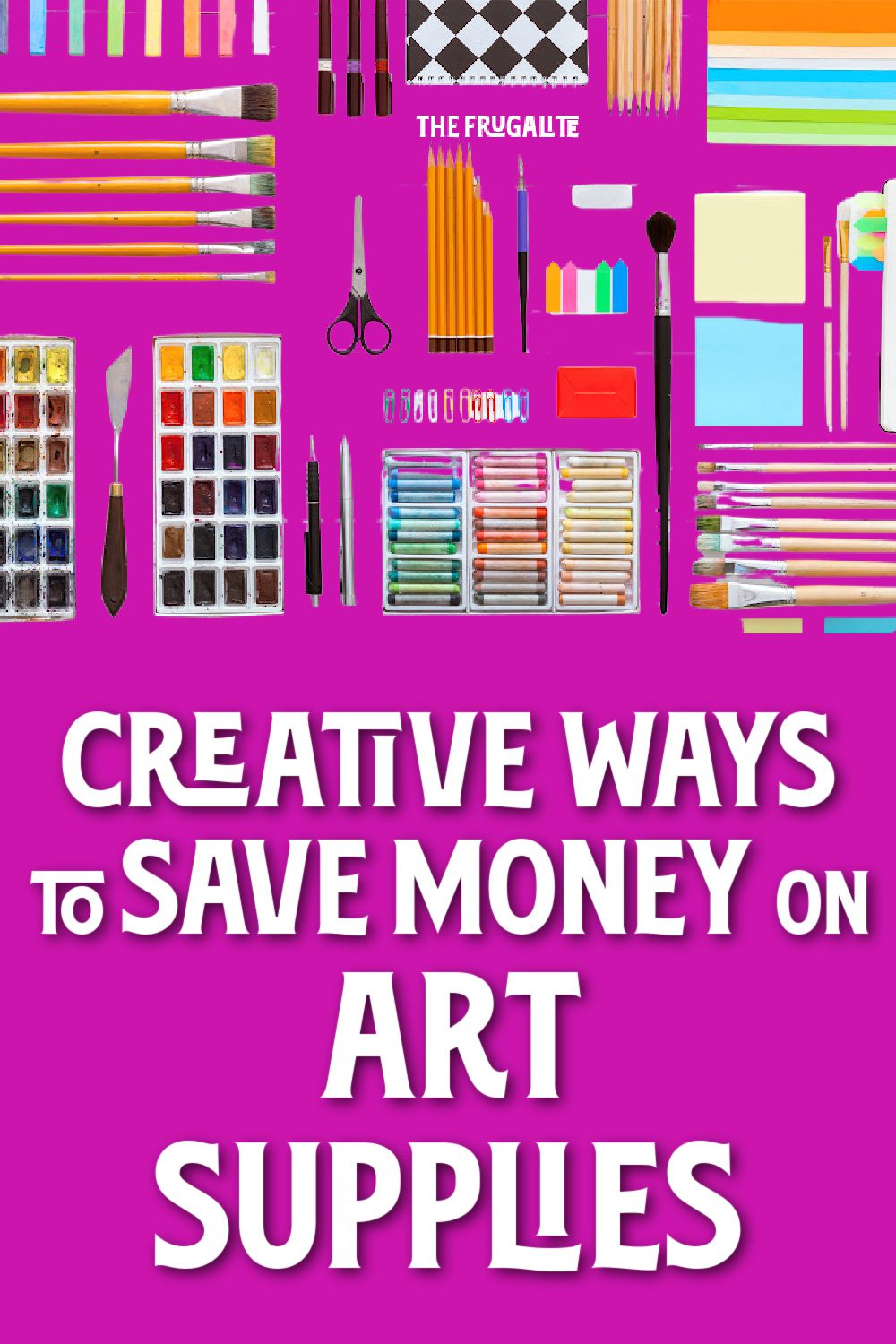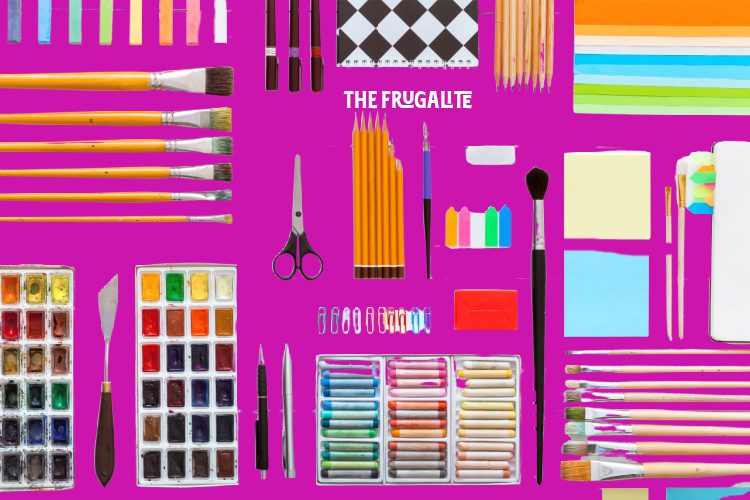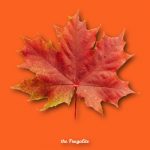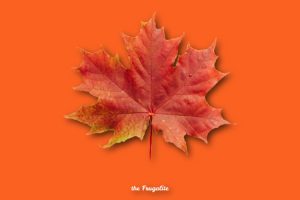(Psst: The FTC wants me to remind you that this website contains affiliate links. That means if you make a purchase from a link you click on, I might receive a small commission. This does not increase the price you’ll pay for that item nor does it decrease the awesomeness of the item. ~ Daisy)
By Rohvannyn Shaw
Walking around an art supply store, it can feel like you have to be rich to be an artist! All those wonderful pens, paints, markers, pencils, specialty papers, and shiny tools shine so brightly, begging to be bought. It’s not any better when looking at art. So many pieces are done with professional-grade oils or really fancy illustrator markers on the very best paper. It seems as if you are doomed as an artist unless you buy the very best art supplies!
Fortunately, that’s far from the truth. You can create amazing things while still spending sensibly. It takes creativity, but hey, we’re creative people, right? To find out more about creative ways to save money as an artist, read on!
Quality versus cost
The successful frugal artist balances quality with cost. They look for the best values in art supplies, which may not always mean buying the cheapest thing. This way, you save money but at the same time get a good result. For example, you can get art materials at dollar stores. In most cases, though, they will be the poorest quality. Paint will not cover, the paper will be too smooth or too thin, and pens will run out quickly. Crayons won’t cover. You get the idea. Since that’s a recipe for frustration, not creativity, you will want to avoid those and go a step or two higher.
First, it’s a good idea to look at the full range of items available for the art you do. You can get a feel for what’s good value and bad.
Just like with food, pay attention to the container sizes also. Some items may be less expensive but not last you through a single piece of artwork.
Some brands, like Castle, Ohuhu, and Arteza, mimic the premium brands but cost a fraction of the price. You can find them on major online retailers. I mention those in particular because others mimic premium brands but fail miserably!
Luckily there are a ton of reviews, both videos, and articles, comparing these value brands with the best. A little research can save you a lot.
Generally, when using cheaper art material, you are going to have trade-offs. Maybe the pencils don’t blend well, but they have really vibrant colors. Or maybe the paint is nice and smooth but doesn’t cover well. You will have better results by thinking about the kind of art you want to do and picking the material that has strengths where you need them, but maybe you can account for the weaknesses in some way. For example, maybe the pencils you buy don’t blend very well. You can look up tips to overcome that or perhaps change the paper you use them on. It’ll make you a better artist.
Lower cost media
Maybe you have that creative itch but don’t want to spend a ton getting materials. Maybe your child or grandchild is interested in art, and you want to support them but don’t want to spend hundreds on supplies. Either way, here is a list of media that have a lower set-up cost. I’m sure there are others!
Pencils – Probably the cheapest medium out there. You can do beautiful things with a simple number 2 pencil on cheap sketch paper. Not only that, but if you want to get nicer materials, high-quality artist pencils can be had at affordable prices and last a long time. Good paper for pencils isn’t all that expensive either.
Charcoal – Also fairly cheap, though you use up charcoal faster and often need bigger sheets of paper. It can be messy, and you may need to buy fixative.

Pen and Ink – A basic set of drawing markers or a bottle of ink with a handle and a couple of nibs, doesn’t have to cost much at all. As a bonus, you can usually get suitable paper for a fairly affordable price.
Watercolors – These can be very affordable. In tube form, the paint can last a long time. Also, because of the way watercolor works, the small tubes can still get you a lot of paint. Paper can be very costly. If you tape your paper down to a board, you can get away with painting on thinner stocks and save money that way. You can also get good quality synthetic brushes at a fairly low cost.
Sumi – Starter kits for this will provide you with ink, an ink stone, and a basic set of brushes. Rolls of washi can be fairly affordable. So if this appeals to you, it’s perfectly possible to make beautiful art for a fairly low starting cost.

Colored Pencils – This can be cheap or expensive depending on the types of pencils you buy and also the size format you work in. For maximum value, get good pencils but work in a smaller format. I find that Arteza pencils or Castle pencils are both good artist options and about half the price of premium brands. Don’t scrimp on the pencil sharpener. A good one will help you get a lot more out of your pencils, so look for one with a metal body and a sharp blade.
Digital Art – Though you can create digitally with just a mouse, it usually works better to have a tablet. Those can be had fairly cheaply, you can get a basic one for around $50, and it’ll last you years. Two extremely good free art programs are GIMP and Krita. Both work on PC, Mac, and Linux. People wanting to get into 3D rendering can use Blender.

Dollar Store or discount stores:
Despite what I said earlier, here are a few items that won’t disappoint you:
- Rulers
- Pencils (usually basic number 2 pencils)
- Drawing paper (it’s usually too rough or too smooth, so feel carefully before buying)
- Erasers
- Sharpies
- Stickers
- Fake flowers
- Craft wire
I would generally avoid colored pencils, crayons, clay, or coloring markers from dollar stores unless it’s from a brand you know and trust. Otherwise, you run the risk of paying good money for supplies that will fail.
Hardware stores
These can be a surprisingly good source for art materials, depending on what you need. For example, you can get hardboard or plywood for painting surfaces, canvas drop cloths and wood for making into canvases, paint thinner, mineral spirits, linseed oil, and large brushes. Other items such as wire, dowels, and plaster can also be found, and all for a lot less than an art store would sell. This can be really helpful if you are into oil painting but need to save money!
Thrift stores
You will be lucky to find good art materials here. They’ll usually be near the children’s items. However, they almost always have canvasses and frames. All you have to do is find a painting or artwork that is the right shape and size. Then reuse the frame or gesso over the canvas and paint on top.
Grocery and office supply stores
Sometimes, they have some nice deals, so it pays to keep an eye open. You can sometimes find some really good pens for drawing there or paper that will work for pencils or inks. I’ve seen sketchbooks too. The best time is right after the back-to-school blitz.
Craft stores
These often have good deals around the holidays or discounts on one item – use that discount to buy the paints or marker set you’ve been wanting.
Just avoid other impulse buys as you go after those loss leaders.
Online
For a wide variety of quality art supplies at fair prices, with explanations of what everything is for, I like Dick Blick. They are based out of brick-and-mortar stores in the US, contribute to community art education, and are great to work with.
Amazon has a huge variety of supplies as well. If you are going to use them, it pays to shop around and watch for specials. Though not everyone likes Amazon, I like that you can choose to shop from small businesses through them if you wish.
A special note about artists and art bundles
It can be tempting, but those all-in-one art kits are usually not a great bargain. I’m talking about those cases that have markers, pens, pencils, watercolors, crayons, and pastels all in the same box. The supplies are usually poorly made, and you pay a lot for that flimsy plastic case, so it won’t be worth it unless you buy them at a deep discount.
By contrast, sometimes starter kits dedicated to just one medium can be good. For example, I’ve seen a really nice set of drawing pencils in a tin for under ten dollars and something similar for fine-line manga pens. My favorite travel watercolor kit was a great value, too, so shop around. It’s those all-in-one starter kits that you should view with extreme caution.
Free art supplies
If you are flat broke but still want to create art, all is not lost. I have seen gorgeous works of art that were completed with ballpoint pens or cheap office pencils. Some artists that absolutely blow me away with their talent do some of their work with only Crayola.
So there might be art materials lying around the house that you haven’t considered. Think: highlighters, free bank pens, dry-erase markers, that kind of thing. You can draw on white cardboard, the kind found inside boxes as a stiffener. You can even make watercolors with some food items – beet juice, tea, coffee, food coloring, and more. I’ve even seen people paint with Jell-O or Kool-Aid powder!
I’ve burned sticks to make charcoal and used hunks of drywall as sidewalk chalk. Even the worst Dollar Store pencils CAN work if you give them enough time and patience. If you really want to make art, you can find a way. Even though it’s not the best paper, normal printer paper can work for sketching or other dry media. You can use it to practice and save the good stuff for your final work.
Free art education
Want to go to art school but don’t have the money? Need something to do while you’re stuck at home to expand your mind? There are so many wonderful teachers online that are offering free knowledge. There are free articles on pretty much everything, even on how to be an artist. There are videos about every art form you could imagine. Then, also there are books at the library with a wealth of knowledge.
Did you know that the vast majority of working artists have no art degree? It’s true! Somewhere around 80 percent! So if you want to make art into a side hustle, that’s an option too.
Final thoughts on being a frugal artist
While you are seeking out the best deals in art, it’s also important to consider each purchase carefully, just like anything else. It’s easy to spend emotionally, so that’s an important step. For example, ask yourself, “do I really need this item, or do I have something that already does the job? Can I make what I need, for example, mixing two colors to get what I need?”
I hope this article gave you an idea or two. You definitely don’t have to be rich to make amazing art. If you have other ways you save money on art or craft supplies, I’d love to hear them in the comments below! Similarly, if there is anything you’d like me to write about in-depth, please let me know.
Happy Creating!
Are there other hacks you know about to save money as an artist? Have you tried the above? Let us know in the comments section below.
About Rohvannyn
Rohvannyn Shaw lives in suburbia but still values old-fashioned skills and techniques. When she’s not preventing her sourdough starter from taking over the world, she’s baking, grilling, reading, writing, illustrating stories, gaming, or keeping up with her cats. She maintains a website dedicated to creativity at https://mind-flight.org, as well as an art portfolio at https://rohvannynshaw.com.












8 thoughts on “Creative Ways to Save Money on Art Supplies”
If you have to buy anything from a box store, sign up for their mailing list to get coupons. There’s no reason to pay full price for anything at Michaels, Joann Fabrics, or Hobby Lobby. I buy large canvases from Michaels ONLY when I have the 50% coupon or when they have the 50% off canvas sale.
Oh, same here. That’s a fantastic suggestion! Thanks!
Arts and crafts are a huge part of my frugal stress-relief strategy. It really helps me to maintain my calm during stressful times to be able to create something beautiful.
Thank you for these great suggestions!
It just makes you feel good, doesn’t it? Like – countering entropy. By the way, I’m really grateful to whoever picked the illustrations for this article, they are really lovely!
I absolutely love this article. Thank-you for writing it. It was very informative. I would like to pursue my creative side, but haven’t wanted to spend too much money.
You’re welcome! Now you can spread your art wings- enjoy your journey!
Rohvannyn, your enthusiasm for art comes through in your article; it’s very inspiring! I enjoyed the many tips you shared, and was reminded of how I used to enjoy pencil sketching, something I haven’t done for years. Here’s to (first finding) and then picking up my pencils again!
This is a great article!
I have been told that hairspray will work as a fixative for charcoal, but I haven’t tried it in years, and the formulas may have changed. It might be a useful thing to try, if you have hairspray.